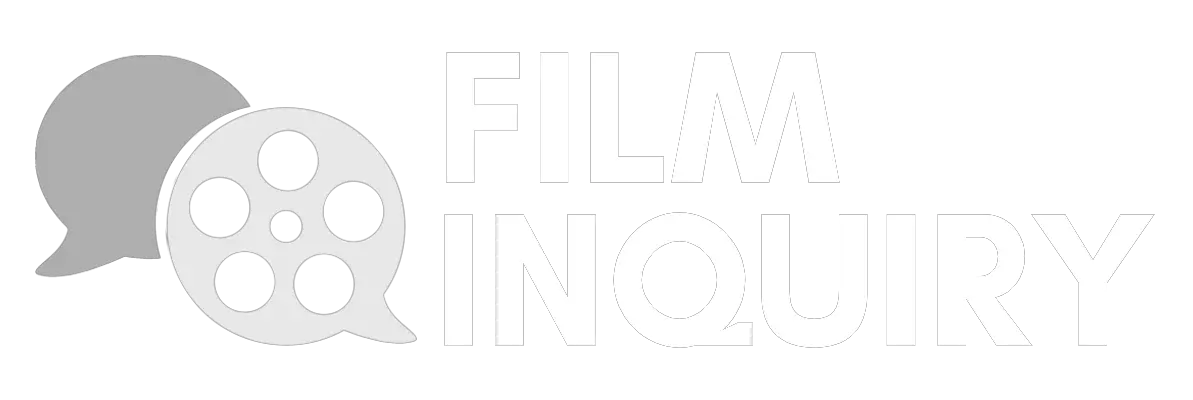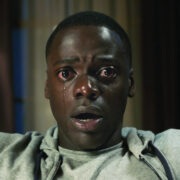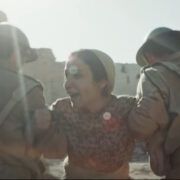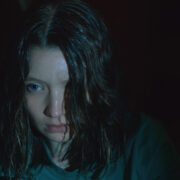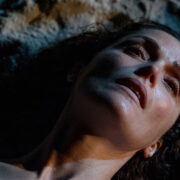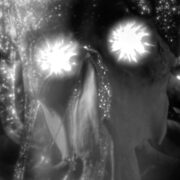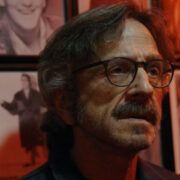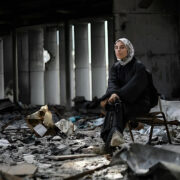NYFF63: Dry Leaf, Back Home + Ecce Mole, Put Your Soul on Your Hand and Walk
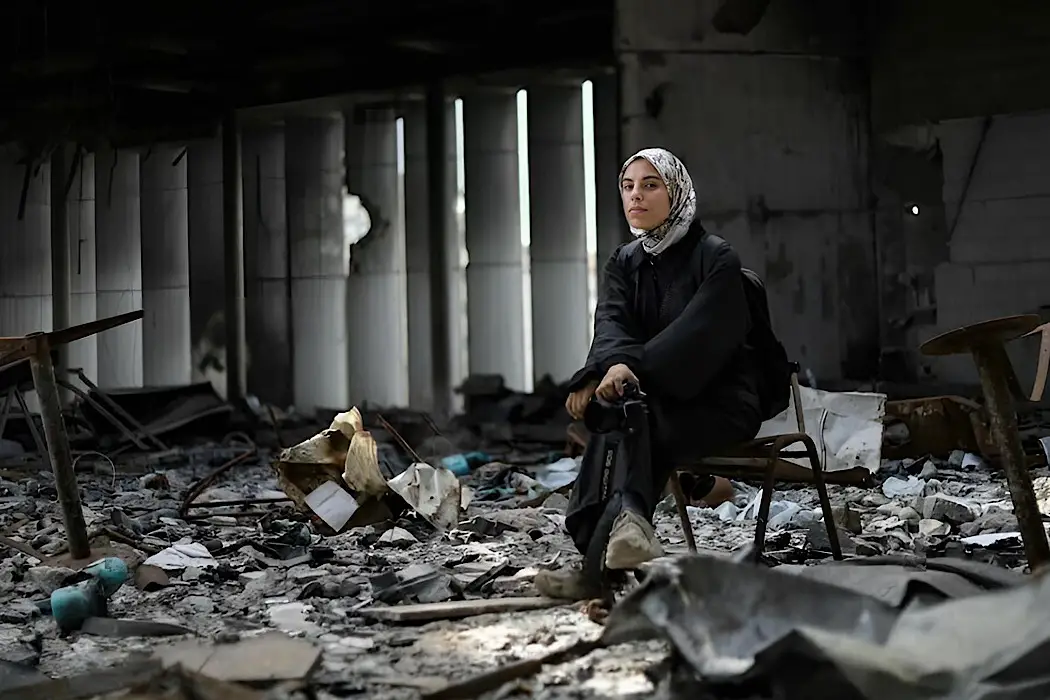
Lee Jutton has directed short films starring a killer toaster,…
The Main Slate at the New York Film Festival is always the one that receives the most attention, packed as it is with new works that festival organizers believe reflect the current state of cinema. But there are many gems to be found in the festival’s other slates, including Currents, which focuses on formally inventive works from around the world, and Spotlight, which highlights a smaller selection of highly anticipated films. Read on for my thoughts on a few films from these sections, including a sprawling Georgian mystery shot entirely on an old phone, documentaries exploring locations in Laos and Italy, and a powerful, enraging portrait of a murdered Palestinian photojournalist whose hopes for the future remained undaunted even as bombs continued raining down on everything and everyone she loved.
Dry Leaf
The third feature from Georgian writer-director Alexandre Koberidze, Dry Leaf follows Irakli (David Koberidze, the filmmaker’s father) on a rambling road trip through rural Georgia as he attempts to track down his missing daughter, Lisa. A photographer for a sports magazine, Lisa was working on a project in which she would travel across the country photographing football fields; her best friend and colleague, Levani (Otar Nijaradze), would write the captions. Levani’s knowledge of the project leads him to accompany Irakli on the trip as a kind of guide; he also happens to be invisible, which the film’s amusingly dry voiceover notes is true for many of the people in the world of Dry Leaf. This leads to no shortage of surreal scenes in which Irakli appears to be conversing with no one, though he seems to be aware of these invisible people’s presence enough to approach them and ask them if they’ve seen Lisa. Their testimonies are generally vague, often contradictory, and not terribly helpful.
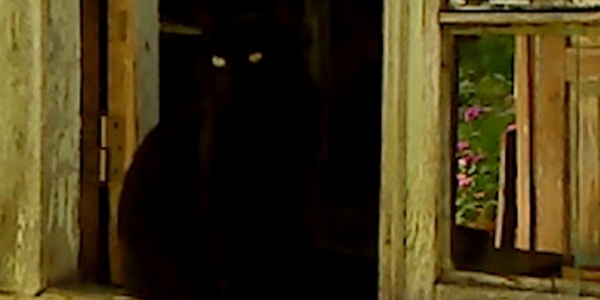
The Georgian countryside—full of wide, empty plains, ragged mountain peaks, and decaying towns that nonetheless maintain a melancholy beauty—is rendered even more otherworldly by Koberidze’s audacious decision to shoot Dry Leaf on an old Sony Ericsson phone. The resulting images are smudged to the point of resembling Impressionist paintings, making the world of the film feel all the more removed from that of reality; movements that are too abrupt and jarring for the antiquated technology to capture properly dissolve into a mass of clashing pixels. It’s an intriguing artistic choice that, combined with an evocative score by the filmmaker’s brother Giorgi Koberidze, creates an atmosphere that is easy for the audience to get lost in, though I’d be lying if I said that it wasn’t difficult to keep my eyes trained on those out-of-focus images for the entirety of the film’s 186-minute running time.
Dry Leaf’s slowly unspooling story doesn’t have anything approaching a satisfying resolution, but it’s the journey, so much more than the final destination, that makes this film worthwhile. It helps that Irakli is an engaging and incredibly likable protagonist: the kind of guy who enlists someone to feed the stray dog he cares for while he is away and also feeds and greets pretty much every animal he encounters on his trip. One of my favorite scenes in the film is actually the moment when Irakli suggests to Levani that, before moving on, they say goodbye to a donkey whose nose he petted earlier; he walks by the paddock and, seeing the donkey grazing, gives it a jaunty wave.
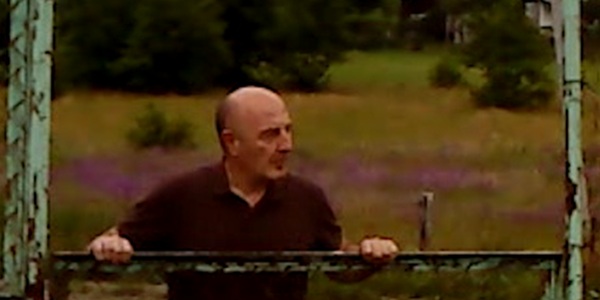
Later on, when he is finally home again, Irakli reminisces about that donkey and so many of the other wonderful things he encountered while on the road: things that might appear mundane at first glance but, when you allow yourself to look deeper, are actually quite magical. Dry Leaf is a film about appreciating those things and allowing them to linger on in your memory, so that you can contemplate them whenever you need comfort—and in our current world, who doesn’t?
Back Home + Ecce Mole
While more limited in scope, Tsai Ming-Liang’s new documentary, Back Home, feels like a spiritual sibling to Dry Leaf in its focus on the small yet memorable things that give places their unique beauty. In this case, the place is the Laotian village that Anong Houngheuangsy (star of Tsai’s Days, which played at NYFF58) calls home. A vibrant collage of static shots in which Tsai trains his camera on everything from candy-colored houses leaning precariously on the stilts that raise them above the rice fields to a dog repeatedly trying and failing to escape the orbit of a neon-hued carnival ride, Back Home is a travelogue that focuses on the everyday as opposed to the extraordinary. This is best exemplified by the sequence in which we watch craftsmen hammering shapeless stones until the faces of religious icons slowly emerge; witnessing their making by human hands renders their mystical nature largely mute. There is very little dialogue in Back Home, and what is there isn’t subtitled, but words aren’t needed to ground the viewer in this specific time and space. Watching it is a nice way to meditate for approximately an hour.
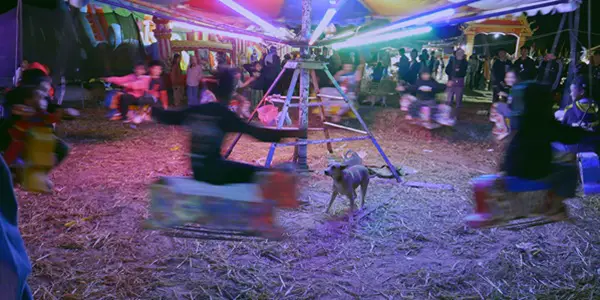
Tsai’s film is screening at NYFF alongside another cinematic exploration of time and space, Ecce Mole, which focuses on two Turin landmarks designed by 19th-century architect Alessandro Antonelli. The first is the Casa Scaccabarozzi, also known as Fetta di Polenta due to its resemblance to the shape of a slice of polenta. If that sounds bizarre, it is: it’s an extremely narrow residential building that looks as though it would blow over in the slightest breeze, yet survived the bombing of Turin during World War II unscathed. Filmmaker Heinz Emigholz brings us inside, his camera highlighting the sharp angles of the building’s stone staircases and the (in my opinion) claustrophobic nature of the interior spaces. This is then contrasted with the massive Mole Antonelliana, whose cavernous inner spaces are now home to Italy’s National Museum of Cinema; at the time Emigholz shot the film, the museum was hosting an exhibition on James Cameron, a fitting subject for a space of such epic scope. Still, a dialogue-free collection of shots of two buildings from a bunch of different angles, as fantastic as those two buildings may be, is probably one for architecture nerds only.
Put Your Soul on Your Hand and Walk
Iranian filmmaker Sepideh Farsi felt compelled to make a film about the regular people living under siege in Gaza, and to tell a story “beyond numbers, images of destruction, and dominant narratives in the media.” As Farsi was unable to enter Gaza herself, a Palestinian friend in Cairo connected her with Fatma Hassona, a talented young photojournalist whose work shone a light on the harsh realities of civilian life during the war and the fortitude shown by everyday Palestinians in the face of violence and starvation. The numerous video calls documenting the growing friendship between these two women and the deteriorating situation for Hassona and her loved ones in Gaza make up the bulk of Put Your Soul on Your Hand and Walk, a film made all the more heartbreaking by the fact that Hassona and her family were murdered in their home by a targeted Israeli airstrike, the day after the film was accepted at Cannes earlier this year. She was only 25, one of the more than 200 journalists murdered by the Israeli military since October 7, 2023.
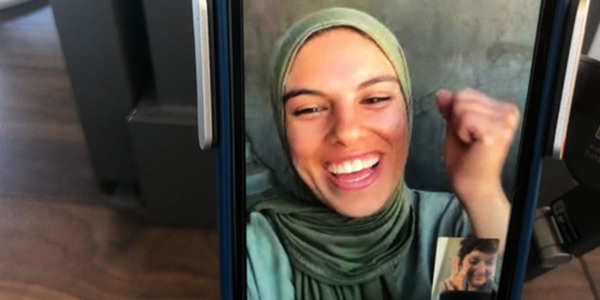
It’s hard to believe Hassona is really gone, as she is such a vibrant and lively presence throughout Put Your Soul on Your Hand and Walk; her bright smile lights up the screen as she introduces Farsi to members of her family and describes her dream of one day traveling the world. However, she voices a hopeful desire to always return to her home in Gaza, something that the more cynical and world-weary Farsi, who has been in exile from her homeland for the past 40 years after being imprisoned as a dissident at the age of 16, warns may not be possible. During their video calls, the two women make plans to one day visit an amusement park together, talk about their shared love of cats—Hassona is delighted to see Farsi’s cats appear on one of the calls—and discuss the political situation in Gaza. Integrated with footage of these calls are recordings of news broadcasts about the war, reports that in many instances sharply contrast with the reality for Hassona and her family on the ground.
Hassona expresses herself not just through her photography, but through poetry and song; one of the film’s most heartbreaking moments is when she mourns the death of one of her closest friends, another talented artist who worked in embroidery. This is one of the few moments in Put Your Soul on Your Hand and Walk where Hassona breaks down, and it’s nearly impossible not to break down with her. Throughout the film, she shows incredible strength in being candid about the horrible things she has experienced while still refusing to see herself and her people as victims. Yet as time passes, we can see the effects that the famine, in particular, is having on her; her smile grows a little less bright and her words a little more muddled as she struggles to keep her thoughts straight due to lack of nutrition. At one point towards the end, she finally acknowledges to Farsi that she’s suffering from depression. Yet little things that the rest of us would take for granted, like obtaining a bag of chips, are still a cause for celebration.
Put Your Soul on Your Hand and Walk is often difficult to watch, in form as well as content. Because of weak Internet and power outages in Gaza, the video calls that comprise the majority of the film cut out multiple times and are generally pixelated and difficult to understand. This is made more complicated by the fact that while the entire film is subtitled to compensate for the audio issues, sometimes the subtitles don’t match exactly what the people onscreen are saying. Yet none of this makes Put Your Soul on Your Hand and Walk any less essential viewing; it only adds to the raw, unvarnished nature of the narrative. Little can compare with the horror of watching one of the video calls be interrupted by a deafening blast, with Hassona aiming her phone out the window to show Farsi the billowing plumes of black smoke so dangerously close to where she currently is. I’m furious that she is not still alive, and furious with Israel for killing her and so many others like her in an attempt to stop them from speaking out. That’s why it is so important for Put Your Soul on Your Hand and Walk to be seen, and Hassona’s voice heard.
Dry Leaf and Back Home + Ecce Mole are screening as part of the Currents slate and Put Your Soul on Your Hand and Walk is screening as part of the Spotlight slate at the 63rd New York Film Festival, which runs from September 26 to October 13, 2025.
Does content like this matter to you?
Become a Member and support film journalism. Unlock access to all of Film Inquiry`s great articles. Join a community of like-minded readers who are passionate about cinema - get access to our private members Network, give back to independent filmmakers, and more.
Lee Jutton has directed short films starring a killer toaster, a killer Christmas tree, and a not-killer leopard. Her writing has appeared in publications such as Film School Rejects, Bitch: A Feminist Response to Pop Culture, Bitch Flicks, TV Fanatic, and Just Press Play. In addition to movies, she's also a big fan of soccer, BTS, and her two cats.

